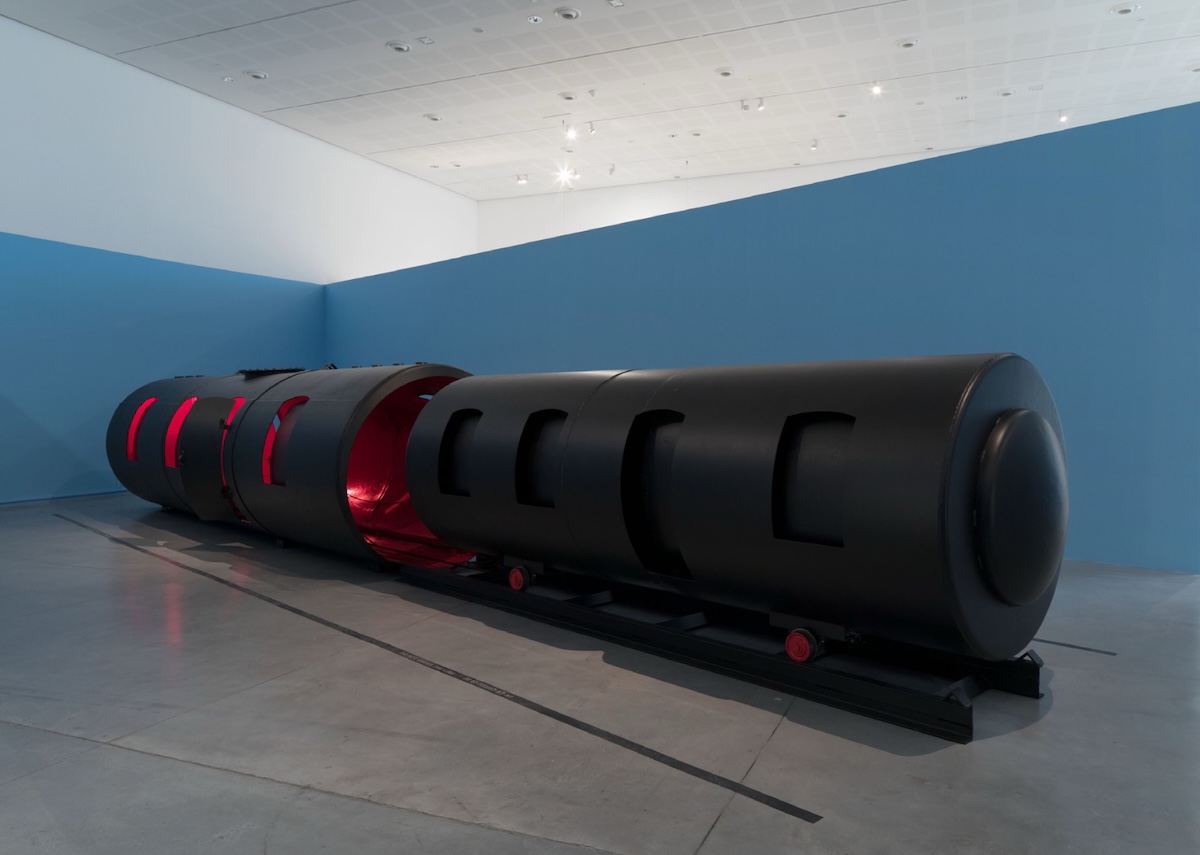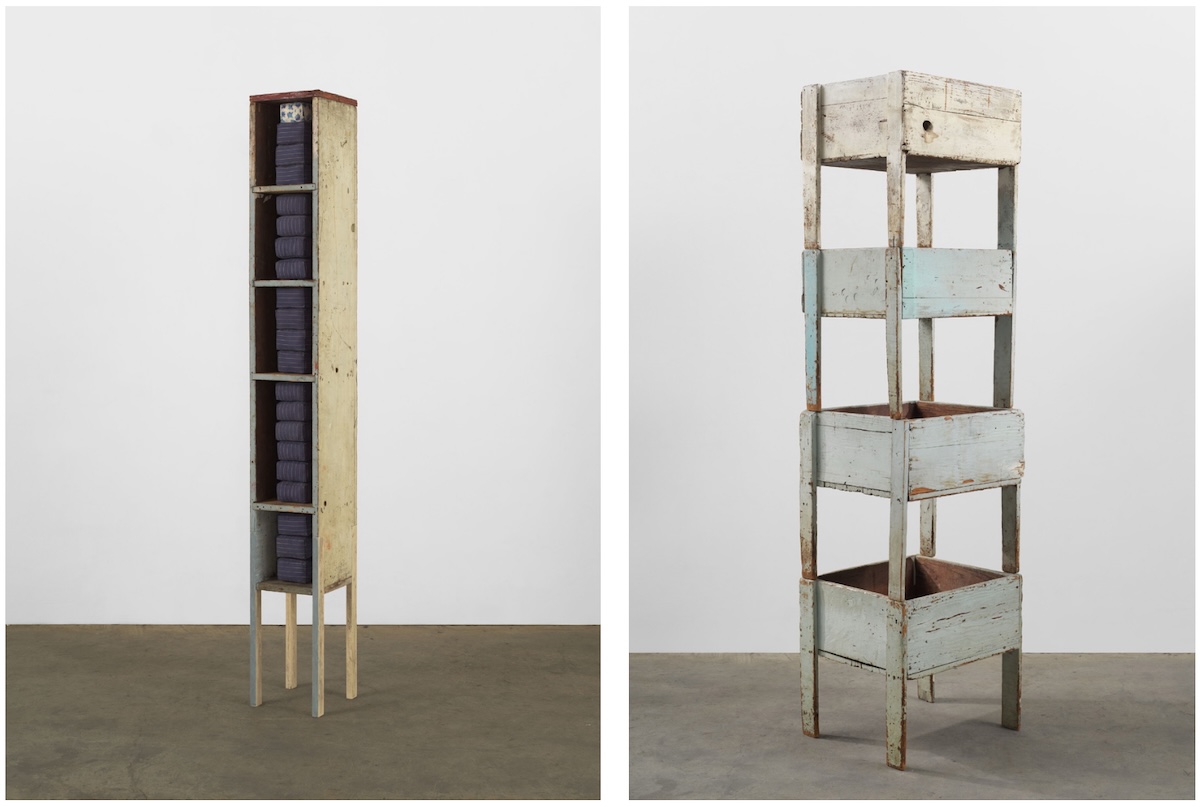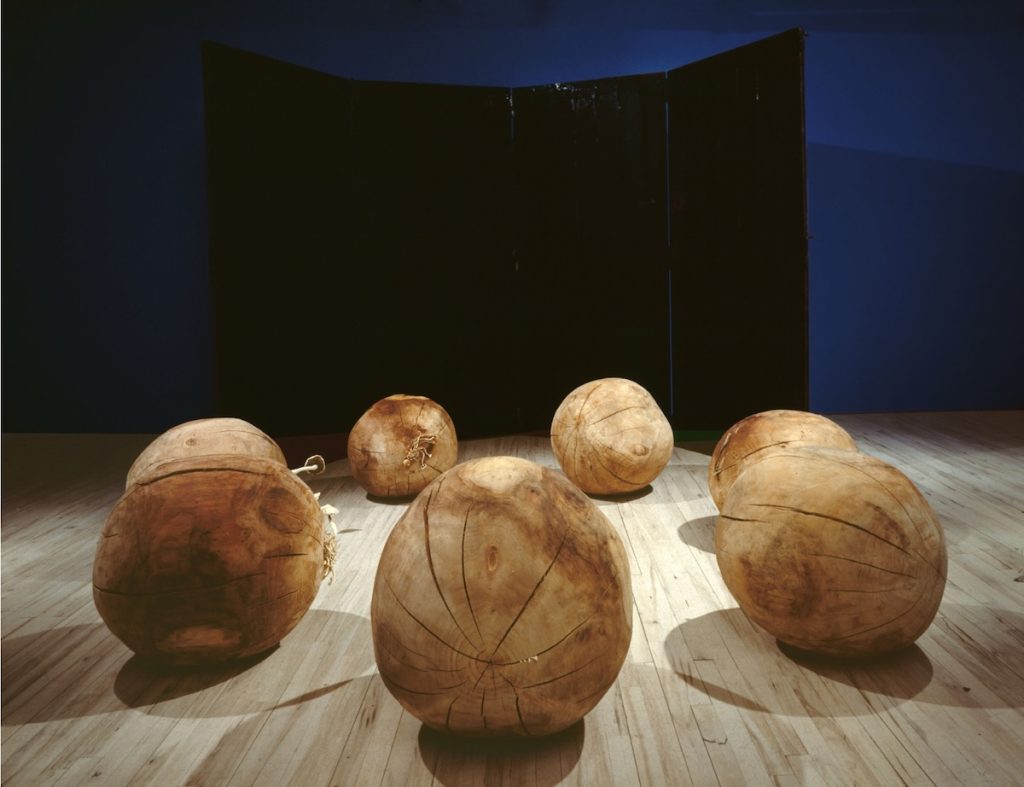Louise Bourgeois and the Introspective Power of Abstraction
This fall, Louise Bourgeois returns to the forefront of critical conversation with Gathering Wool, a revelatory exhibition at Hauser & Wirth New York, on view from November 6 through January 2026. Known for her fearless psychological introspection and her ability to traverse figuration and abstraction with equal intensity, Bourgeois’s late works are often eclipsed by her iconic spiders and early feminist sculptures. Yet Gathering Wool shifts that lens. This exhibition emphasizes Bourgeois’s late abstract vocabulary, offering viewers a chance to understand how she communicated internal logic and personal myth through symbolic form.
The exhibition draws its title from Gathering Wool (1990), a sculptural installation composed of seven wooden spheres gathered in front of a tall, four-panel semicircular screen. It’s an enigmatic and spatially sensitive work, marking a precursor to her famed Cells series. The phrase “gathering wool” suggests mental drifting or daydreaming, a state of mind that Bourgeois not only welcomed but cultivated in her studio. It was in this meditative space that symbols emerged—often unannounced—transforming raw material into charged, deeply personal environments.
By juxtaposing late-career abstractions with select earlier works, Gathering Wool reveals the consistency in Louise Bourgeois’s themes. Even at her most minimal or materially austere, Bourgeois remained loyal to the emotional and psychological terrain that fueled her practice for over 70 years. Her exploration of the subconscious remains evident in every form, whether overtly anatomical or subtly geometric.

Louise Bourgeois: A Life Committed to Psychological Truth
Born in Paris in 1911 and based in New York from 1938 until she died in 2010, Louise Bourgeois stands as one of the most psychologically incisive and materially innovative artists of the 20th and 21st centuries. Her work, whether sculptural, textile, or on paper, is charged with deeply autobiographical content—often referencing childhood trauma, maternal relationships, and sexual identity. Her formal concerns were never bound by medium; whether working in latex, marble, fabric, or bronze, Bourgeois imbued each material with symbolic intensity.
The exhibition opens with Twosome (1991), an industrial installation where a smaller tank rhythmically moves in and out of a larger one—an explicit metaphor for the mother-child bond. Nearby, footage of Bourgeois’s rare 1978 performance A Fashion Show of Body Parts plays, capturing a theatrical moment of psychological catharsis and maternal longing. These works collectively root abstraction not in detachment, but in raw emotional impulse—a reminder that Louise Bourgeois’s practice was always about the negotiation between form and feeling.
Sculptures on the first floor further reflect this dynamic. In Untitled (With Hand) (1989), a child’s arm emerges from a massive sphere; in Mamelles (1991), water trickles from a wall of bronze breasts; in Le Défi II (1992), light radiates from glass elements arranged like scientific relics in a steel cabinet. Mushrooms, breasts, limbs, and spheres become fragments of memory and desire—tools in Bourgeois’s ongoing excavation of the unconscious.
Louise Bourgeois and the Language of Emotional Architecture
On the fifth floor, the tone of Gathering Wool shifts toward the vertical. Here, Bourgeois’s stacked and modular forms dominate, suggesting attempts to restore order amid inner chaos. Vertical progression and repetition emerge as psychological tools—acts of emotional architecture meant to stabilize overwhelming feelings. The balance of precarious top-heavy structures speaks to fragility, while the interlocking of modular forms reveals a desire to ward off abandonment.

(right) “Untitled”, 1988, Painted wood and marble
Each material gesture corresponds to a state of mind: stacking for obsession, triangular forms for jealousy, symmetry for protection. In these distilled compositions, we see a woman building her own symbolic grammar—one that exists outside of patriarchal tradition and within her own psycho-emotional terrain. “I am the author of my own world with its internal logic and with its value that no one can deny,” Louise Bourgeois once wrote, and Gathering Wool is perhaps the purest manifestation of that ethos to date.
Whether viewed as abstraction, symbolism, or autobiography, these works are unified by their intent: to transform lived emotional experience into tangible form. For Bourgeois, making was not just a way of processing memory—it was a way of surviving it.
Discover more from artsXhibit
Subscribe to get the latest posts sent to your email.

